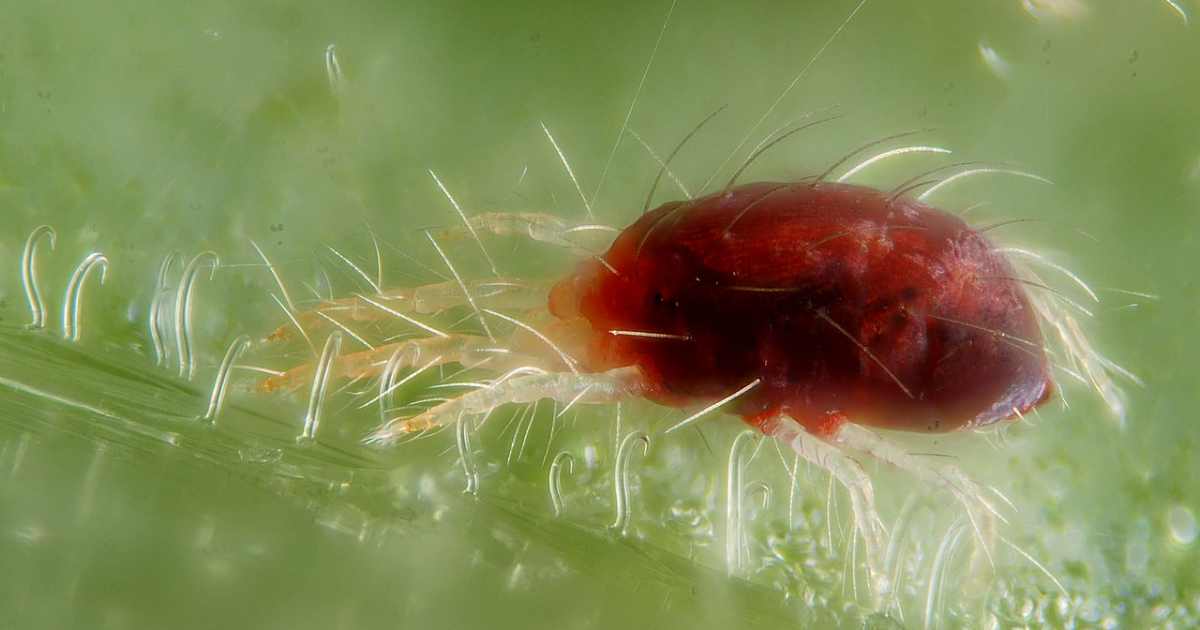Industrial hemp (cannabis sativa L. subsp. sativa var. sativa) is a robust plant, but nevertheless it is still subject to attack by a number of pests – and not just the two- legged variety that mistake it for marijuana.
In fact, hundreds of insect pests are known to be partial to industrial hemp, but only a reasonably small percentage have the capacity to wreak havoc on a crop.

Some insect pests can destroy a crop or heavily impact on the yield of seed, fibre and cannabinoids such as cannabidiol, which is particularly valuable. While the hemp plant produces certain chemicals to help ward off pests, in an ongoing evolutionary battle some have become resilient or find ways around hemp’s chemical defenses.
Let’s take a look at some these pests and what aspects of the industrial hemp plant they impact.
Aphids
Aphids tend to skulk on the underside of hemp leaves, sucking nutrients from the plant. They can be particularly problematic given their rapid rate of reproduction.
Budworms
Budworms are the larvae of a white moth, which lays eggs on the plant. Budworms can be easy to miss as these insect pests are green and only come out of hiding at night to chew away at the industrial hemp plant’s flower and stems.
Crickets
Crickets aren’t particularly fussy eaters if they are hungry – and if hemp is on the menu, they’ll tuck into the leaves and can wipe out seedlings very quickly.
Cutworms
Cutworms are the larvae of several species of moth that can be hard to spot as they hide under litter around plants or underground during the day. At night, the pests venture out to attack industrial hemp stems, but will also eat the roots and leaves.
European corn-borers
The European Corn-borer doesn’t limit its damage to its namesake – it’s also a major pest of industrial hemp. It will drill a small hole in the lower stalk and then eat its way to the top branches of the plant and continue to eat any new growth.
Fungus gnats
Fungus gnats are just a couple of millimetres long, but what the insects lack in size, they make up for in numbers. While these pests initially feed on fungus at soil level, when that is depleted, fungus gnats will start attacking root hairs. This makes the hemp plant more susceptible to fungal diseases as well as causing abnormal growth and leaf colour.
Stink bugs
While some stink bugs are carnivorous and can be beneficial in controlling other pests, others are herbivorous, attacking plants and feasting on their sap.
Hemp borers
These are smaller than the European corn-borer mentioned above, but still do a lot of damage. The hemp moth can lay hundreds of eggs. The small hatched caterpillars feed on the underside of leaves initially, then as their life cycle progresses they turn their attention to the stem – making their way to the top of the plant where new plant growth is eaten.
Hemp flea beetles
A couple of flea beetle species favour chomping on leaves, while another species prefers eating the roots of industrial hemp plants. While a few insects may not be a big deal, given the numbers these pests can reach, hemp flea beetles pose a particular threat to seedlings and young plants.
Leafhoppers
There are thousands of species of leafhopper insects, which vary in appearance and colour. Leafhoppers suck out the sap from leaves hemp leaves, leaving brown spots behind.
Leafminers
A leaf miner is the larva of some moths, sawflies and flies. Leaf miner larva leave can leave serpentine lines in leaves resulting from the pest’s boring activities.
Root maggots
Root maggots are the larvae of the fungus gnats that we mentioned above. These tiny white maggots eat the roots of cannabis plants.
Slugs and snails
These well-known garden pests aren’t actually insects, but molluscs. Slugs and snails will eat the leaves and heads of industrial hemp plant.
Spider Mites
Spider mites aren’t an insect either – they are arachnids. Spider mites eat the chlorophyll in industrial hemp plants, preventing them from carrying out photosynthesis. If not controlled, they can wipe out a crop very quickly. A female spider mite can lay thousands of eggs in a very short time and they hatch within a few days. These pests often escape detection until it’s too late due to their tiny size and the fact they tend to live on the underside of leaves. A tell-tale sign is the presence of small webs.
Note: some varieties of mites are predatory and will feed on plant-eating spider mites.
Thrips
Thrips are tiny winged insects that feed on the sap of cannabis plants, usually from buds and new leaves. Additionally, they are also carriers of plant viruses.
Weevils
While cannabis can drive away some species of weevils, hence its use as a repellant, others have adapted to use it as a food source. In these cases, the adult weevils chew on the leaves and the larvae of the pest feed on the pith of the stem or roots.
White root grubs
The white root grubs of several species of scarab beetles will chew at the roots of a hemp plant.
Whiteflies
Whiteflies are related to aphids, and like aphids are tiny, sap-sucking insects found on the underside of industrial hemp leaves.
Wireworms
These are the grubs of click beetles, which live in the first few inches of soil and will attack cannabis plant roots.
Some of these industrial hemp pests can deliver a double, or even triple whammy. As well as damaging plants by feeding on them and laying eggs in or around them, these insects can be vectors for plant viruses and fungal infestations.
Given the potential catastrophic damage that can be caused, as with any other commercial crop, industrial hemp insect pests must be actively managed.

